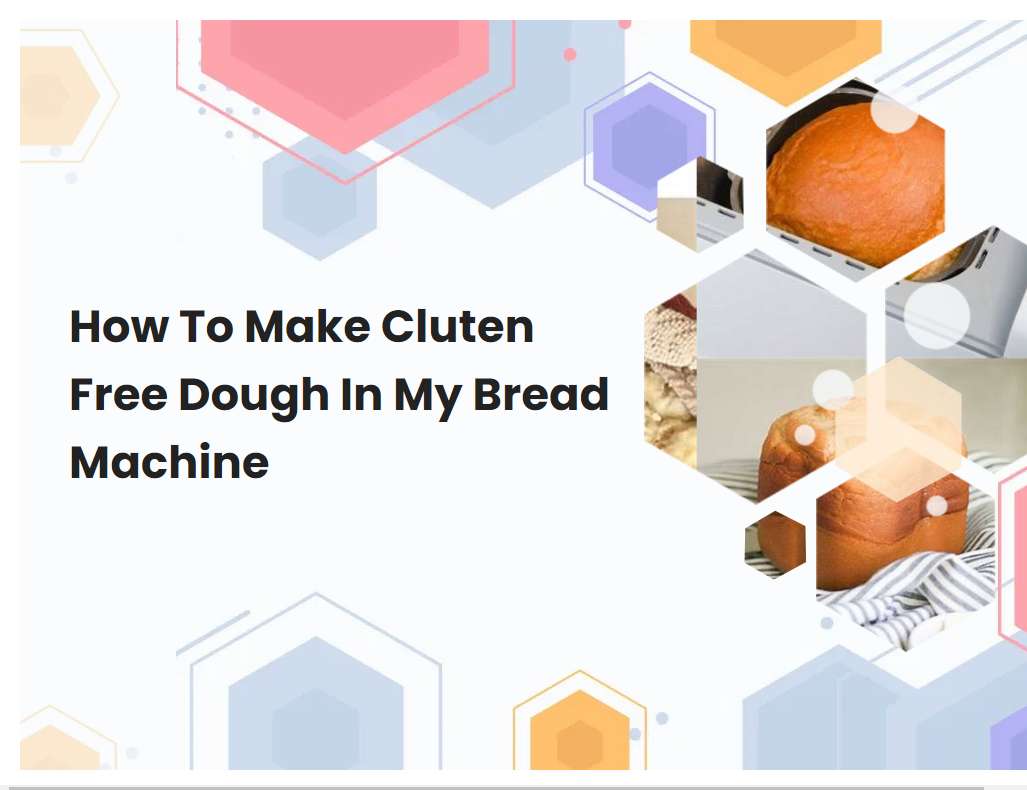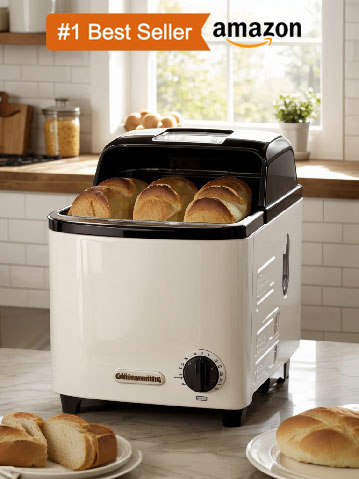How To Make Cluten Free Dough In My Bread Machine
Making gluten-free dough in a bread machine is an excellent way to create delicious, homemade gluten-free bread without having to put in too much effort. This method is much simpler than making gluten-free dough by hand as the bread machine handles all the kneading and rising, making the process easier and quicker. Using a bread machine also ensures a consistent texture and quality, making it the perfect choice for anyone who is looking to make a delicious gluten-free loaf.

Use gluten free flours such as rice, sorghum, quinoa, amaranth, millet, buckwheat, and corn instead of wheat flour.
Gluten free flours are a great alternative to wheat flour for those who are sensitive to gluten or have celiac disease. Gluten free flours are made from grains and seeds that do not contain gluten, such as rice, sorghum, quinoa, amaranth, millet, buckwheat, and corn. Rice flour is the most common gluten free flour and can be used to make a variety of baked goods including cakes, cookies, muffins, and breads.
Sorghum flour is high in protein and fiber and can be used to make breads, pancakes, and muffins. Quinoa flour is a great source of essential vitamins and minerals and can be used for baking cakes, breads, and muffins. Amaranth flour is high in calcium and magnesium and can be used for making pancakes, muffins, and cookies. Millet flour is light and easily digestible and can be used for baking breads, cakes, and cookies. Buckwheat flour can be used to make pancakes, breads, and muffins and is a good source of fiber. Finally, corn flour is a great option for making muffins, breads, and cakes and is high in fiber. All of these gluten free flours are great options for those who cannot eat wheat flour due to gluten sensitivity or celiac disease.
Use xanthan gum or guar gum to help bind the dough together and give it structure.
Xanthan gum and guar gum are powerful binding agents commonly used in baking to give doughs structure and elasticity. They are both polysaccharides derived from natural sources, with xanthan gum coming from the fermentation of glucose, sucrose, or lactose, and guar gum coming from the ground endosperm of the guar plant. When used in baking, these gums help to bind together ingredients that would otherwise separate, such as oil and water, and also help to add structure to doughs that would otherwise be too fragile or crumbly.
Xanthan gum is often used in gluten-free baking, as it helps to mimic the elasticity and texture of gluten, while guar gum can be used in a variety of baked goods, including bread, cookies, and cakes. Using either of these gums in baking can help to create a cohesive dough with a pleasant texture and improved shelf life.
See also: Quick And Easy Dinner Rolls Bread Machine
Use a yeast activator such as apple cider vinegar or lemon juice to help the dough rise.
Using an activator to help dough rise is a great way to make sure your bread rises properly and produces a light, fluffy texture. The most common activators are apple cider vinegar and lemon juice, both of which contain acids that react with the yeast to create carbon dioxide gas. This gas is what causes the dough to rise.
To use a yeast activator, you need to add it to the dough before kneading. Depending on the recipe, you can add it to the milk, or directly to the dry ingredients. When using apple cider vinegar or lemon juice as an activator, make sure to use only one tablespoon per cup of flour in the dough. This will ensure that the bread doesn't become overly acidic or sour. After adding the activator, let the dough rest for about 20 minutes before kneading it. This will give the yeast time to activate and form bubbles, helping your dough rise.
See also: Gluten Free Bread In Bread Machine No Eggs
Use oil instead of butter to help soften the dough and keep it from becoming dry or crumbly.
Oil is a great substitute for butter when making dough. It helps to keep the dough soft and malleable, as well as preventing it from becoming dry or crumbly. When using oil instead of butter, it's important to use the right type of oil.
Oils with a high smoke point, such as canola or vegetable oil, are best for baking. These oils will not burn or smoke, allowing the dough to bake evenly. Additionally, they don't have a strong flavor and will not compete with the flavor of the dough. When using oil instead of butter, it's important to start with a smaller amount and only add more if needed. This ensures that the dough is not too oily or greasy. Once the desired consistency is achieved, the dough can be used as normal. Using oil instead of butter is a great way to make sure that your dough remains soft and pliable, without becoming dry or crumbly.
See also: Bake Bread In Oven From Bread Machine
Add honey or agave nectar to sweeten the dough.
Adding a sweetener such as honey or agave nectar to dough is an easy way to add flavor and sweetness. Honey is a natural sweetener that is made by bees, and has a unique flavor that pairs well with many baked goods. Agave nectar is a liquid sweetener that is derived from the agave plant, and has a milder flavor than honey.
Both of these sweeteners can be added to the dough before baking, and can be used in any recipe that calls for a sweetener. When adding either of these sweeteners to dough, it is important to keep in mind the amount of liquid that is already in the recipe, as adding too much can alter the texture of the finished product. Adding just enough of either honey or agave nectar will create a deliciously sweet dough that can be used for any baking project.
See also: Fleischmann's Bread Machine Yeast Per Cup Of Flour
Add seasonings such as herbs and spices to enhance the flavor of the dough.
Seasonings can add a great deal of flavor to dough. Herbs such as oregano, basil, rosemary, and thyme bring out the savory notes of the dough. Spices like cumin, coriander, garlic powder, and smoked paprika help to add depth and complexity to the flavor profile.
A pinch of nutmeg can also give the dough a slightly sweet taste. Depending on the type of dough being made, adding some freshly chopped herbs or a sprinkle of Parmesan cheese can also provide a boost in flavor. Adding these seasonings can transform a plain dough into something truly delicious.
See also: Replacement Basket And Paddle For Hamilton Beach Bread Machine
Add a little bit of gluten free baking powder to help the dough rise better.
Gluten free baking powder can be a great addition to your gluten free baking recipes. This type of baking powder is specially formulated to help gluten free doughs rise better and give them a lighter texture. When added, gluten free baking powder helps the dough to rise higher and become more airy.
It also helps to form a gluten free crust that is slightly crispier than when using regular baking powder. When using gluten free baking powder, you may need to use a little more than you would with regular baking powder due to its lower leavening power. Additionally, you may need to add more liquid to your recipe as gluten free baking powder tends to absorb more moisture than regular baking powder. With a few simple adjustments, gluten free baking powder can help make your gluten free baking recipes light, fluffy, and delicious.
Increase the amount of water or liquid used in the recipe if the dough seems too dry.
If the dough appears too dry, it is important to increase the amount of liquid used in the recipe. This can be done by adding a few tablespoons of water or other liquid such as milk, buttermilk, or vegetable oil. It is important to add the liquid slowly and in small increments.
Adding too much liquid at once can cause the dough to become too wet and sticky. Additionally, it is important to make sure that all of the liquid has been fully incorporated before adding more. Adding extra liquid can also help to make the dough easier to work with. After adding extra liquid, knead the dough for a few minutes to ensure that it is evenly distributed throughout the mixture. If the dough still appears too dry after these adjustments, repeat the process until the desired texture is achieved.
Allow extra time for the dough to rise and proof before baking.
Rising and proofing the dough before baking is an important step in making a perfect loaf of bread. Allowing extra time for the dough to rise and proof will ensure that the bread has an even texture and flavor. The rising process helps develop the gluten in the dough, which gives it a smooth texture and also helps to add volume to the loaf.
Proofing helps to further develop the flavor and texture of the dough, giving it a soft, light texture. The yeast in the dough will also have time to activate during this process, creating carbon dioxide which will help the dough to rise further. Allowing extra time for the dough to rise and proof will help ensure that the loaf of bread is light, flavorful, and has a delicate texture.
Use a pre-programmed gluten free cycle on your bread machine if it has one, or use a regular cycle with adjusted settings for a gluten free dough.
Using a pre-programmed gluten free cycle on a bread machine is the best way to make a gluten free dough. Gluten free cycles are designed specifically for gluten free ingredients and can help to ensure that the dough is mixed, kneaded, and baked properly. The cycle will automatically adjust the time and temperature of each setting, as well as the amount of kneading, to ensure that the dough is mixed and kneaded correctly for a gluten free recipe.
This cycle also helps to ensure that the dough does not over-rise or become too dense. If your bread machine does not have a pre-programmed gluten free cycle, you can use a regular cycle with adjusted settings. The temperature and kneading time should be adjusted to accommodate the gluten free ingredients, and a shorter rising time may be necessary. Additionally, you may need to add more liquid or reduce the amount of yeast used. Following these adjustments will help to ensure that your gluten free dough is mixed and kneaded correctly and baked to perfection.





